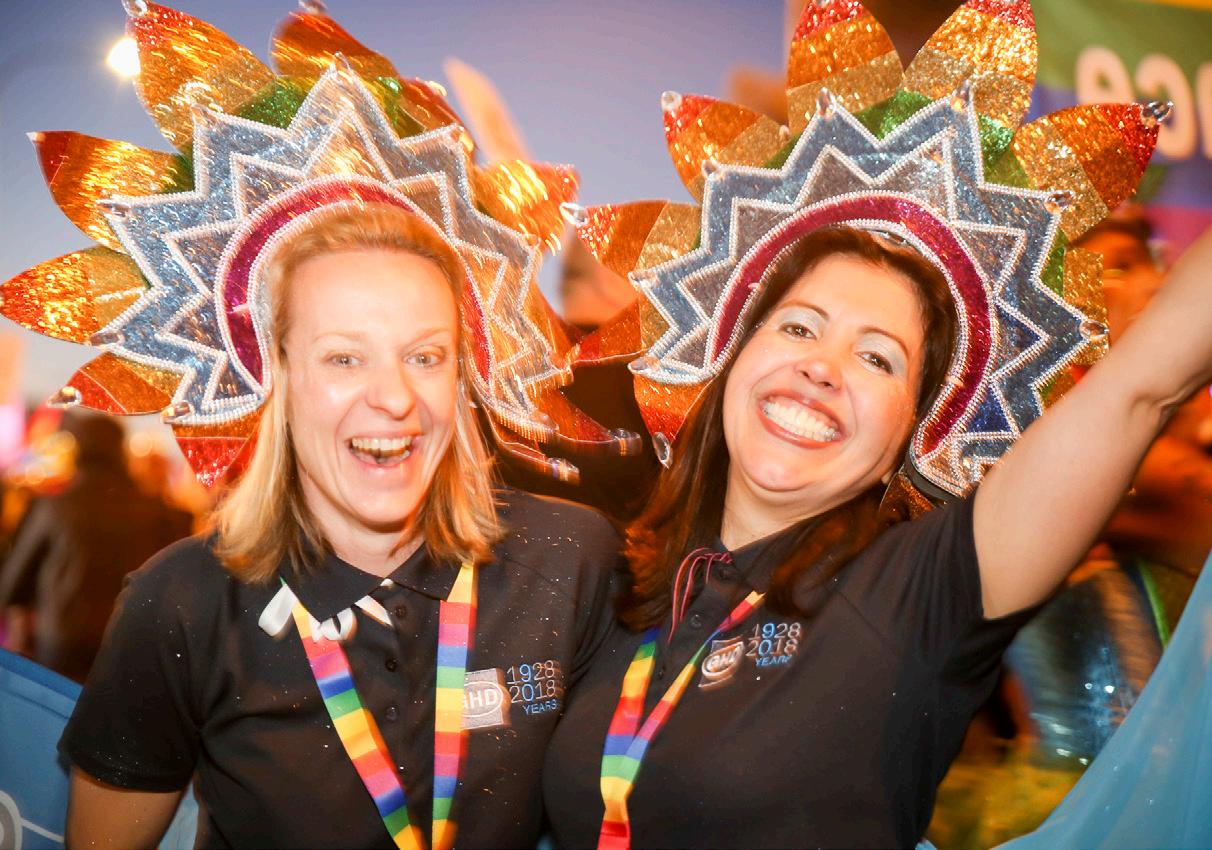
3 minute read
Glossary of common terms
The following is intended as a brief guide to some of the most common terms associated with LGBTI+ inclusion. For a more comprehensive overview, please refer to the resources on the Pride in Diversity website.
Allies: Our Allies network is an internal group of supporters, advocates, friends, educators and agents for change with a common focus on promoting a stronger, more collaborative and diverse voice for LGBTI+ inclusion at GHD. To find out more and become an Ally, contact your local LGBTI+ Champion.
Bisexual: A person who is sexually and emotionally attracted to persons of the same, opposite or different sex.
CIS or Cisgender: A term used to describe when a person’s gender identity matches social expectations for their sex assigned at birth; the opposite of transgender. It is unclear how this term relates to people with intersex variations, if at all.
Deadnaming: The use of the birth or other former name (i.e. a name that is "dead") of a transgender or non-binary person without their consent.
Gay: A person whose primary emotional and sexual attraction is towards people of the same gender. The term is most commonly applied to males, although some females use this term.
Gender identity: Gender is part of a person’s personal and social identity. It refers to the way a person feels, presents and is recognised within the community. A person’s gender expression refers to outward social markers, including their name, outward appearance, mannerisms and dress.
Intersex: Intersex people are born with physical, hormonal or genetic features that are neither wholly female nor wholly male, or a combination of female and male.
Lesbian: A female whose primary emotional and sexual attraction is towards other females. Note that some females may use the term gay woman.
LGBTI+: LGBTI is an initialism that stands for lesbian, gay, bisexual, transgender and intersex. In use since the 1990s, the initialism, as well as some of its common variants, has become an umbrella term for sexuality and gender identity. ‘LGBTI+’ as a collective noun relates to inclusion for all across the spectrum of sexual orientation and sex characteristics, gender identity and gender expressions. Misgendering: Describing or addressing someone using language that does not match a person’s gender identity. For people with intersex variations, this may include a presumption that they have a non-binary gender identity, just as much as an assumption that they are a man, or a woman.
Pronouns: Pronouns are typically the easiest way to acknowledge someone's identity. In an inclusion context, using a person's preferred personal pronoun is a form of respect and validation. Preferred personal pronouns such as ‘she/her’, ‘he/him’ can be included alongside a person’s name (e.g. in their email signature) to help others identify and refer to them respectfully.
Queer: An umbrella term for a wide range of nonconforming gender identities and sexual orientations.
Sex: Refers to the chromosomal, gonadal, and anatomical characteristics associated with biological sex.
Trans: Transgender (sometimes shortened to ‘trans’) is an umbrella term used to describe a wide range of gender identities that differ from the perceived norms aligned to biological sex. Transgender is a term that may be used to describe someone whose gender identity does not match their birth gender, someone who identifies as both genders, neither gender or a third gender.
Transition: Describes both a public act and a process. It involves the permanent and public adoption of the style and presentation of the gender different to that of a person’s birth-assigned sex. It usually includes a change of name, chosen style of address and pronouns, as well as adopting the dress and style of presentation of a person’s innate gender. It may also involve gender reassignment surgery and/or hormone replacement therapy (HRT). Not all who transition undergo medically assisted gender reassignment.

Building a culture of respect for all people and communities is key to ensuring our people can bring their whole self to work each day at GHD.
GHD strives to be an organisation that facilitates more productive and connected teams that value each other's differences. The inclusion of LGBTI+ employees and clients is an important part of that work.
This LGBTI+ Action Plan documents our commitments to achieving our aspirations for the LGBTI+ pillar of inclusion.





